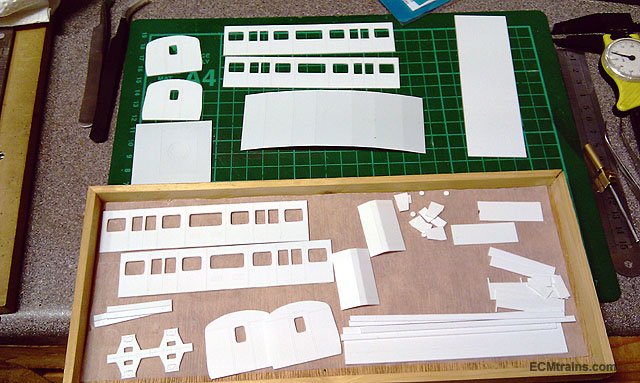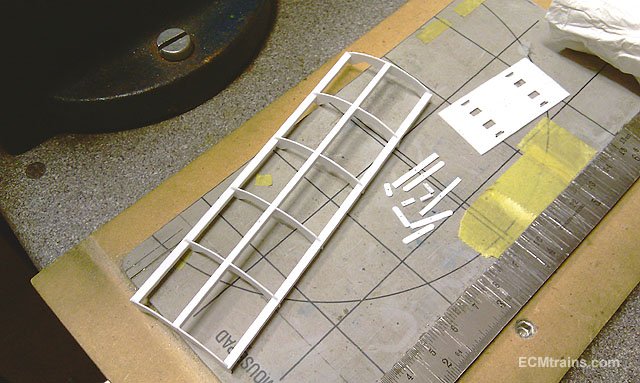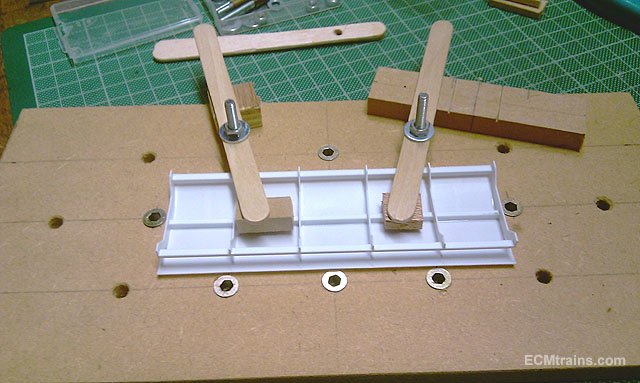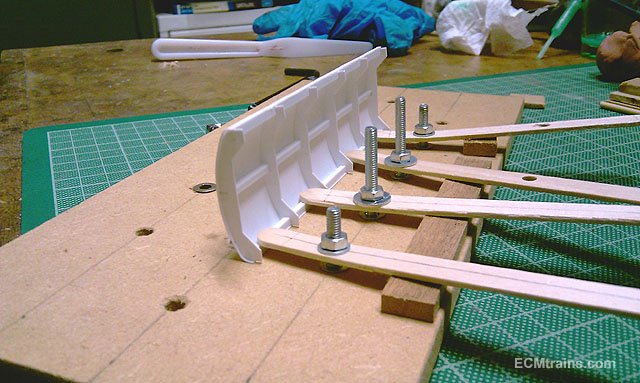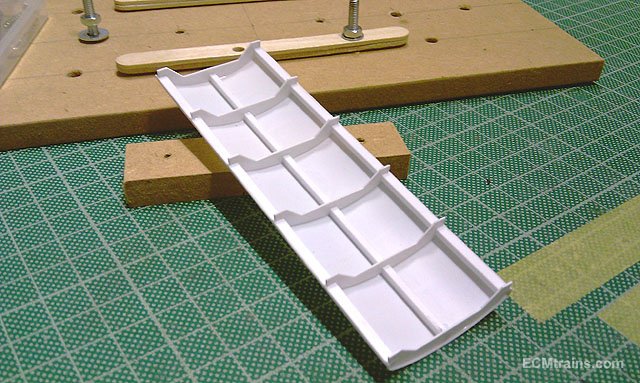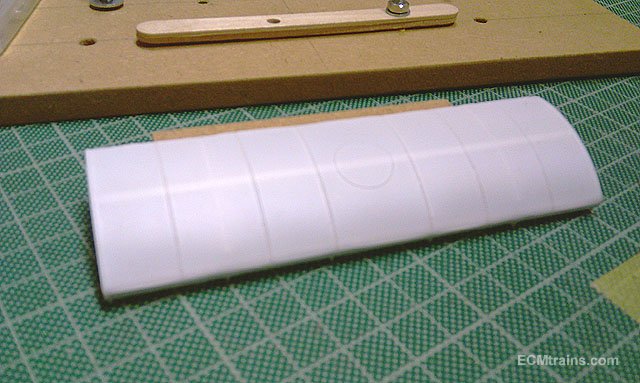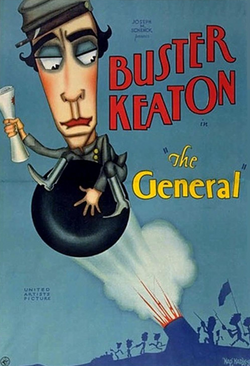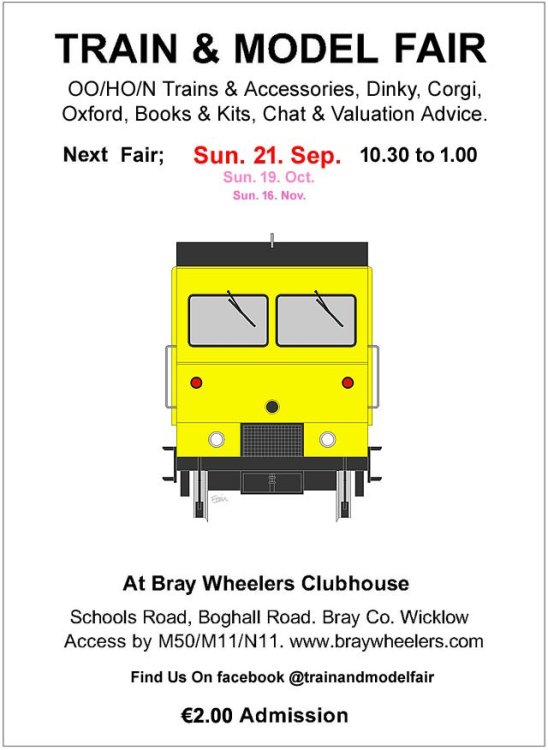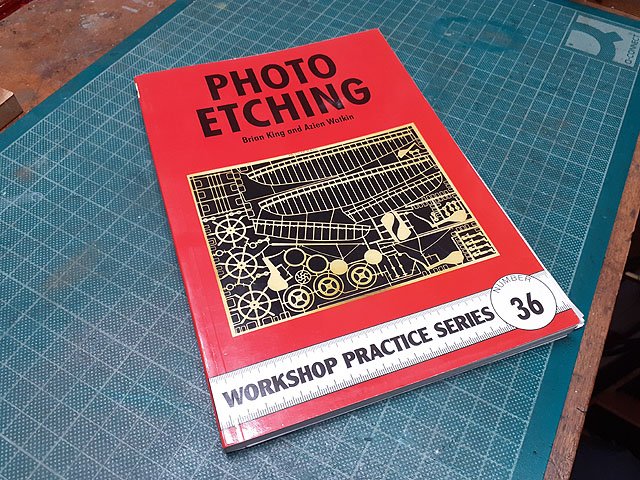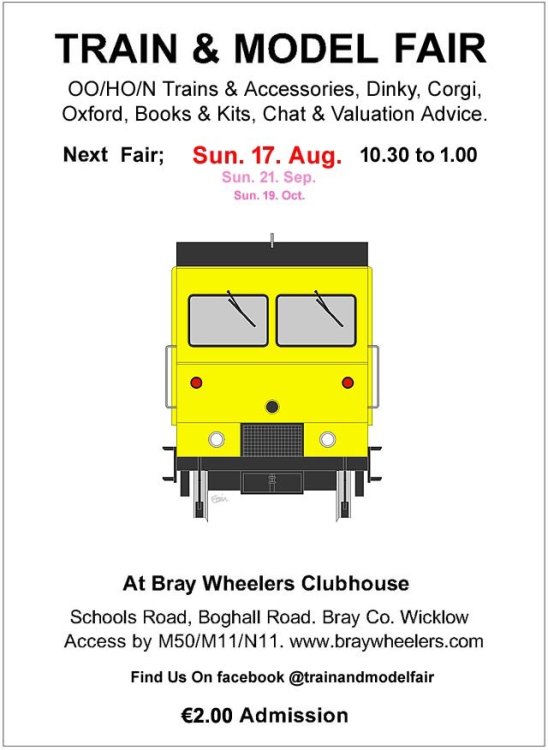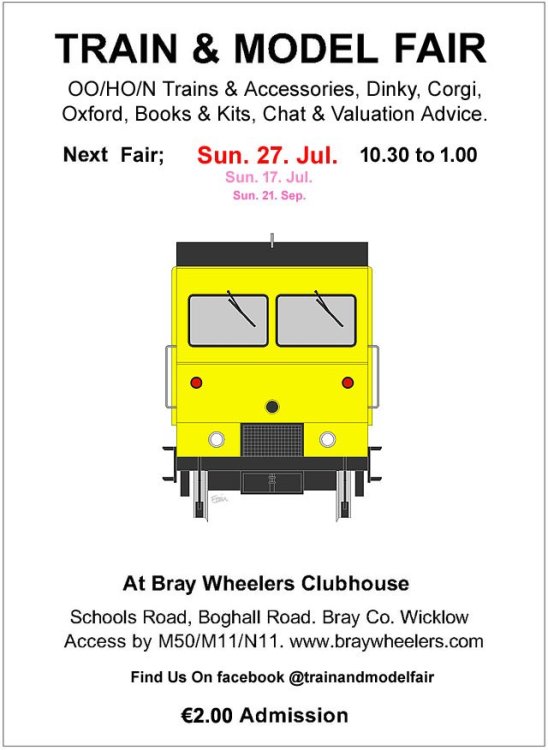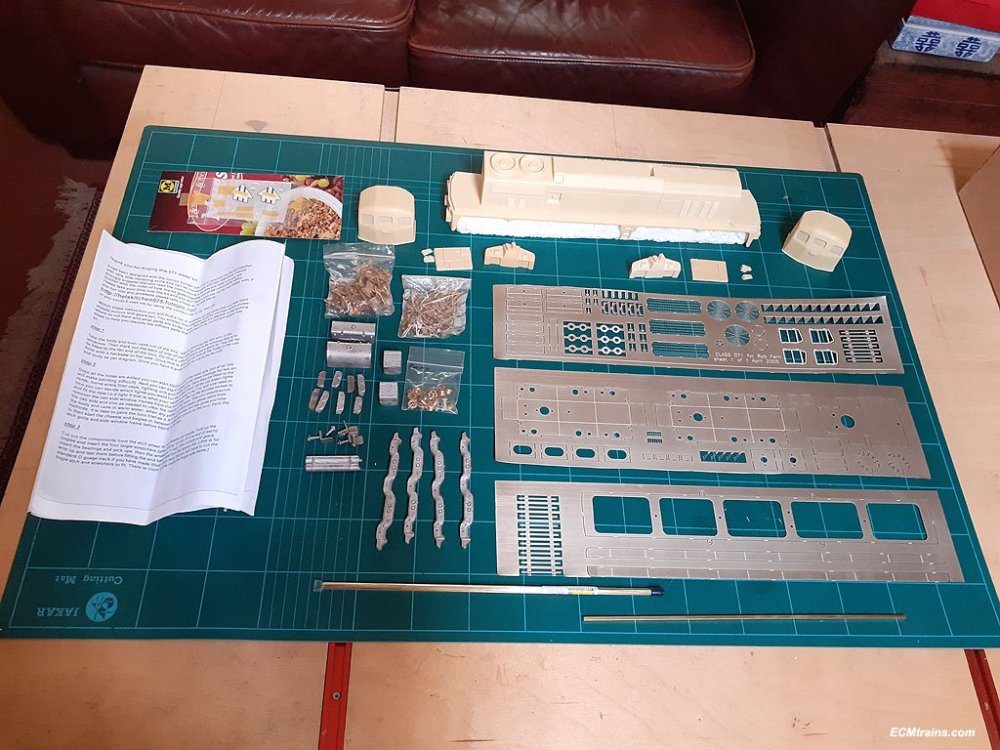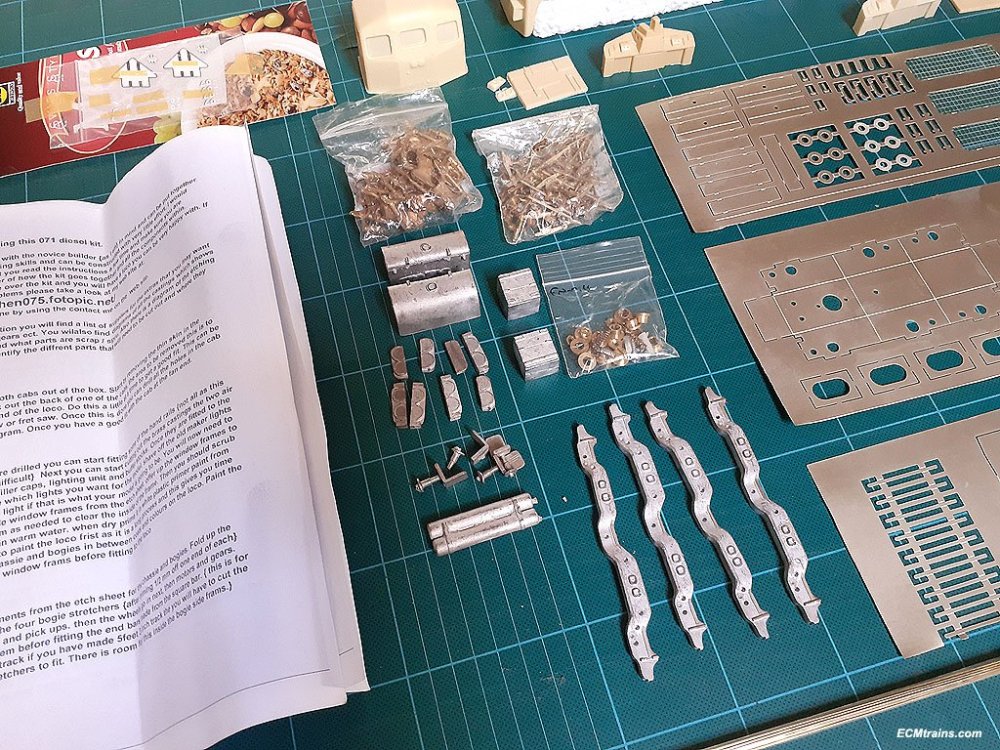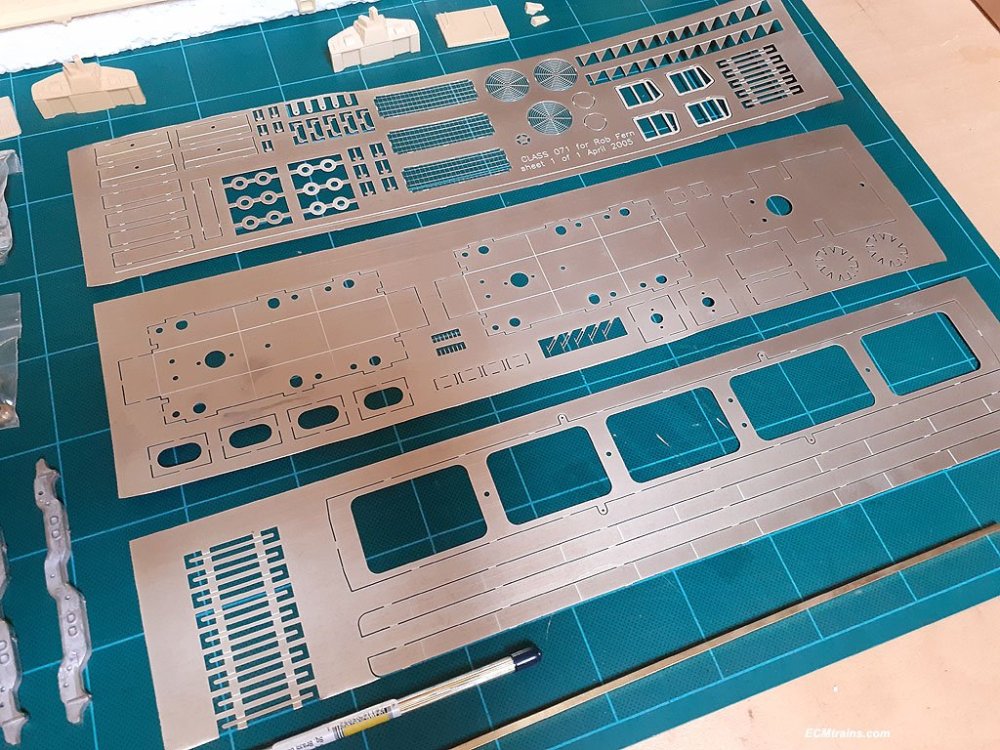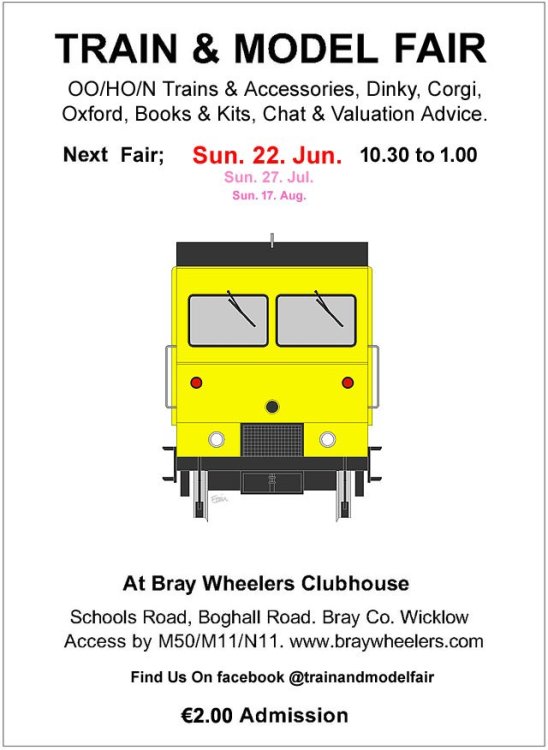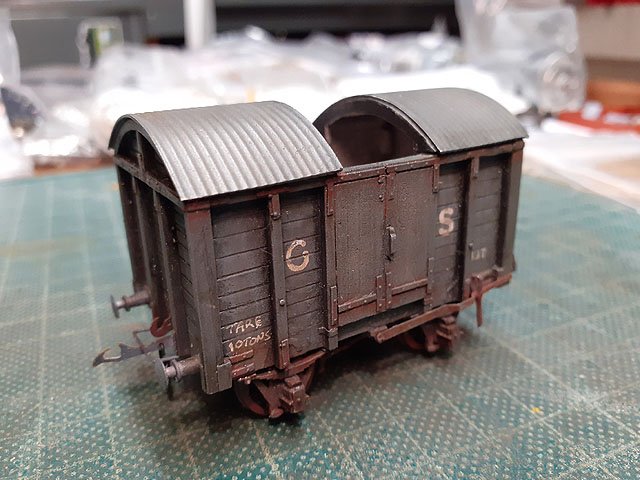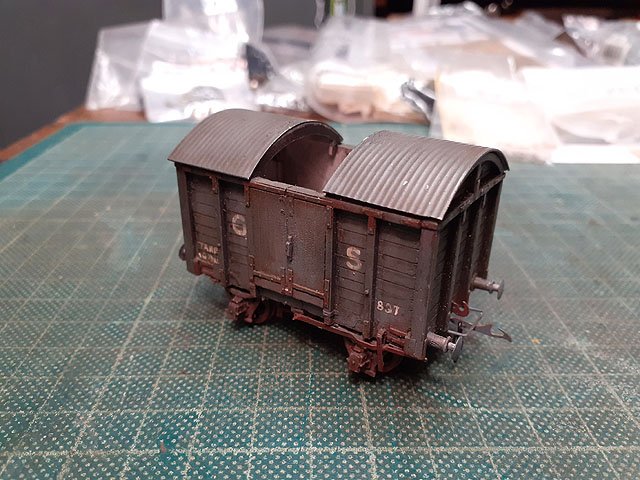-
Posts
2,718 -
Joined
-
Last visited
-
Days Won
70
Content Type
Profiles
Forums
Events
Gallery
Blogs
Store
Community Map
Everything posted by murrayec
-
The book was by Roddy Ring..... More info on a google search 'Drumm Battery Train' and https://en.wikipedia.org/wiki/Drumm_Battery_Train
-
@Galteemore my method;- The polystyrene .5mm ribs are cut out on the Silhouette Cameo cutting machine from a cad drawing, the two outer spars are quadrant shape to give the curve edge on the roof. These are the parts for two vans, cut out and cleaned up. The spars n ribs are glued up- like building a model wing, the ribs are notched to take the spars, and the ribs have a down-stand that notches inside of the coach sides to fix the roof on- one can see this on the bottom photo. The roof covering sheet is cut from .3mm styrene sheet, which is also scored to give the ribbing trim detail on the roof. The roof sheet is stuck down to the central spar first and left to fully dry. Then the edges are turned down over the quadrant, clamped in place and glued. One has to be careful not to use too much glue, too much will melt the styrene roof sheet- it happened on my first attempt! Thats basically it. I built 4 of these tin vans for a client, unfortunately these are the only photos I have of the build, I reckon this was around the time my phone died, followed by the computer back in 2017!! I did make two for myself but never finished them- as John Mayne did another run of his lovely kits, which I bought 2 of- yet to be built...... Eoin
-
Model airplane stuff! I have used model airplane construction method in polystyrene to build coach roofs;- This was for a Tin Van. It would also work with balsa wood. Eoin
- 536 replies
-
- 11
-

-

-
Unfortunately, this project has come to it's end with me, with my lack of performance due to domestic issues over the last 2-3 years the client could not wait any longer. He has sold the model and it's new owner has a chap that will finish it. I look forward to seeing it complete, it's a unique model, and I regret not finishing it myself. Eoin
-
-
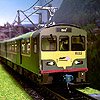
Where do you get your etched works / loco nameplates from?
murrayec replied to Jamie Davis's topic in Irish Models
You can add sodium hydroxide to brake it down into a liquid of a low pH and a sludge, the liquid can be disposed of in the drain and the sludge has to go to the local authority hazardous waste bin. Thats the other thing doing home etching- one is using hazardous stuff, also the etching process gives off hydrogen gas, not huge amounts but best to have a window open! Eoin -

Where do you get your etched works / loco nameplates from?
murrayec replied to Jamie Davis's topic in Irish Models
For one or two off items it is best to go to a suppler, there is a steep learning curve to home etching and it takes a lot of trial n error to get it right. This publication is a great introduction;- Most of the materials are inexpensive, except for the UV light box which is required for exposing/transferring the artwork to the resist on the metal to be etched. If one is considering this, stay away from the spray on resist available in the electronic stores which is rather hard to control. Using a film like 'Puretch' is far better and will help to keep your sanity! Eoin -
-
It's here:- https://irishrailwaymodeller.com/resources/proto_drawings/
-
-
It's a solder up job, parts from the etch sheets, the bottom sheet in the above photos is the main chassis frame, bogies frames are also on the etch sheets. Eoin.
-
Purchased many years ago when they were offered, discussed many times over the intervening years and now, and now!.......... Eoin
-
It's just unreal, poor girl
- 1 reply
-
- 5
-

-

-
I'm assisting a chap to build one of these kits, thought I'd throw up a few photos here as wrennie's photos above, have disappeared;- Eoin
-
-
These chaps may have an 071 in the future, they posted a thread on here some time back https://shop.bowatersmodels.co.uk/collections/coras-iompair-eireann Eoin
-
071 was made by Hells Kitchen models in Wolverhampton, yes, I think about 10 kits were built? might have been more but limited! Resin body and etched brass chassis n bogies Eoin
-

Old Goods Wagons with Center Roof Canvas?
murrayec replied to Auto-Train Original's topic in Irish Models
.png.c363cdf5c3fb7955cd92a55eb6dbbae0.png)

